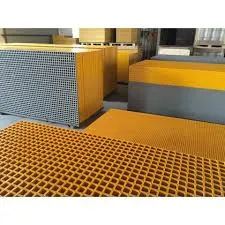
-
 Afrikaans
Afrikaans -
 Albanian
Albanian -
 Amharic
Amharic -
 Arabic
Arabic -
 Armenian
Armenian -
 Azerbaijani
Azerbaijani -
 Basque
Basque -
 Belarusian
Belarusian -
 Bengali
Bengali -
 Bosnian
Bosnian -
 Bulgarian
Bulgarian -
 Catalan
Catalan -
 Cebuano
Cebuano -
 China
China -
 China (Taiwan)
China (Taiwan) -
 Corsican
Corsican -
 Croatian
Croatian -
 Czech
Czech -
 Danish
Danish -
 Dutch
Dutch -
 English
English -
 Esperanto
Esperanto -
 Estonian
Estonian -
 Finnish
Finnish -
 French
French -
 Frisian
Frisian -
 Galician
Galician -
 Georgian
Georgian -
 German
German -
 Greek
Greek -
 Gujarati
Gujarati -
 Haitian Creole
Haitian Creole -
 hausa
hausa -
 hawaiian
hawaiian -
 Hebrew
Hebrew -
 Hindi
Hindi -
 Miao
Miao -
 Hungarian
Hungarian -
 Icelandic
Icelandic -
 igbo
igbo -
 Indonesian
Indonesian -
 irish
irish -
 Italian
Italian -
 Japanese
Japanese -
 Javanese
Javanese -
 Kannada
Kannada -
 kazakh
kazakh -
 Khmer
Khmer -
 Rwandese
Rwandese -
 Korean
Korean -
 Kurdish
Kurdish -
 Kyrgyz
Kyrgyz -
 Lao
Lao -
 Latin
Latin -
 Latvian
Latvian -
 Lithuanian
Lithuanian -
 Luxembourgish
Luxembourgish -
 Macedonian
Macedonian -
 Malgashi
Malgashi -
 Malay
Malay -
 Malayalam
Malayalam -
 Maltese
Maltese -
 Maori
Maori -
 Marathi
Marathi -
 Mongolian
Mongolian -
 Myanmar
Myanmar -
 Nepali
Nepali -
 Norwegian
Norwegian -
 Norwegian
Norwegian -
 Occitan
Occitan -
 Pashto
Pashto -
 Persian
Persian -
 Polish
Polish -
 Portuguese
Portuguese -
 Punjabi
Punjabi -
 Romanian
Romanian -
 Russian
Russian -
 Samoan
Samoan -
 Scottish Gaelic
Scottish Gaelic -
 Serbian
Serbian -
 Sesotho
Sesotho -
 Shona
Shona -
 Sindhi
Sindhi -
 Sinhala
Sinhala -
 Slovak
Slovak -
 Slovenian
Slovenian -
 Somali
Somali -
 Spanish
Spanish -
 Sundanese
Sundanese -
 Swahili
Swahili -
 Swedish
Swedish -
 Tagalog
Tagalog -
 Tajik
Tajik -
 Tamil
Tamil -
 Tatar
Tatar -
 Telugu
Telugu -
 Thai
Thai -
 Turkish
Turkish -
 Turkmen
Turkmen -
 Ukrainian
Ukrainian -
 Urdu
Urdu -
 Uighur
Uighur -
 Uzbek
Uzbek -
 Vietnamese
Vietnamese -
 Welsh
Welsh -
 Bantu
Bantu -
 Yiddish
Yiddish -
 Yoruba
Yoruba -
 Zulu
Zulu
fiberglass ducts demonstrate exceptional resistance against
The Exceptional Resistance of Fiberglass Ducts A Comprehensive Overview
In the realm of HVAC (Heating, Ventilation, and Air Conditioning) systems, the choice of materials plays a pivotal role in the overall efficiency, durability, and performance of the system. Among various materials, fiberglass ducts have garnered significant attention due to their exceptional resistance against a myriad of environmental challenges. This article delves into the attributes that make fiberglass ducts a preferred choice in both residential and commercial applications.
One of the most prominent features of fiberglass ducts is their outstanding resistance to corrosion. Unlike traditional metal ducts, which can rust and degrade over time when exposed to moisture, fiberglass is inherently resistant to moisture-related issues. This property is particularly crucial in areas with high humidity levels, where metal ducts can become a breeding ground for mold and mildew. The non-porous surface of fiberglass prevents moisture absorption, making it an ideal choice for environments prone to dampness.
Furthermore, fiberglass ducts exhibit remarkable thermal insulation properties. They effectively minimize heat loss or gain, thereby enhancing energy efficiency. This attribute not only helps in maintaining consistent indoor temperatures but also contributes to reduced energy bills. The thermal resistance of fiberglass reduces the load on HVAC systems, thereby extending their lifespan and ensuring optimum performance. With rising energy costs and a growing emphasis on sustainability, the ability of fiberglass ducts to improve energy efficiency is a compelling reason for their increasing adoption.
In addition to corrosion and thermal resistance, fiberglass ducts also offer impressive fire resistance. These ducts are manufactured with materials that meet rigorous fire safety standards, providing an added layer of security in the event of a fire. Unlike plastic ducts, fiberglass does not emit toxic fumes when exposed to high temperatures. This feature makes fiberglass ducts a safer option, particularly in commercial spaces where regulatory compliance regarding fire safety is paramount.
fiberglass ducts demonstrate exceptional resistance against

Durability is another key advantage of fiberglass ducts. They are designed to withstand extreme temperatures and harsh environmental conditions without compromising their structural integrity. This resilience means that fiberglass ducts require minimal maintenance over their lifespan, further reducing operational costs for facility managers and homeowners alike. The longevity of fiberglass helps in maximizing return on investment, particularly in large-scale installations.
Moreover, fiberglass ducts are lightweight and easy to handle. This characteristic simplifies the installation process, saving time and labor costs. Unlike heavy metal ducts, which require skilled labor for installation, fiberglass ducts can often be installed more efficiently, facilitating quicker project completion.
Lastly, the environmental impact of fiberglass ducts is worth mentioning. Many manufacturers produce fiberglass duct systems using eco-friendly materials and processes, aligning with the growing demand for sustainable construction practices. By choosing fiberglass ducts, builders and homeowners contribute to reducing their environmental footprint while ensuring a comfortable indoor environment.
In conclusion, fiberglass ducts demonstrate exceptional resistance against corrosion, thermal loss, fire hazards, and harsh conditions, making them an excellent choice for modern HVAC systems. Their durability, ease of installation, and environmentally friendly attributes further accentuate their appeal. As the industry moves towards more sustainable and efficient solutions, fiberglass ducts are poised to remain a staple in the HVAC landscape, offering unparalleled benefits to users across various sectors.









